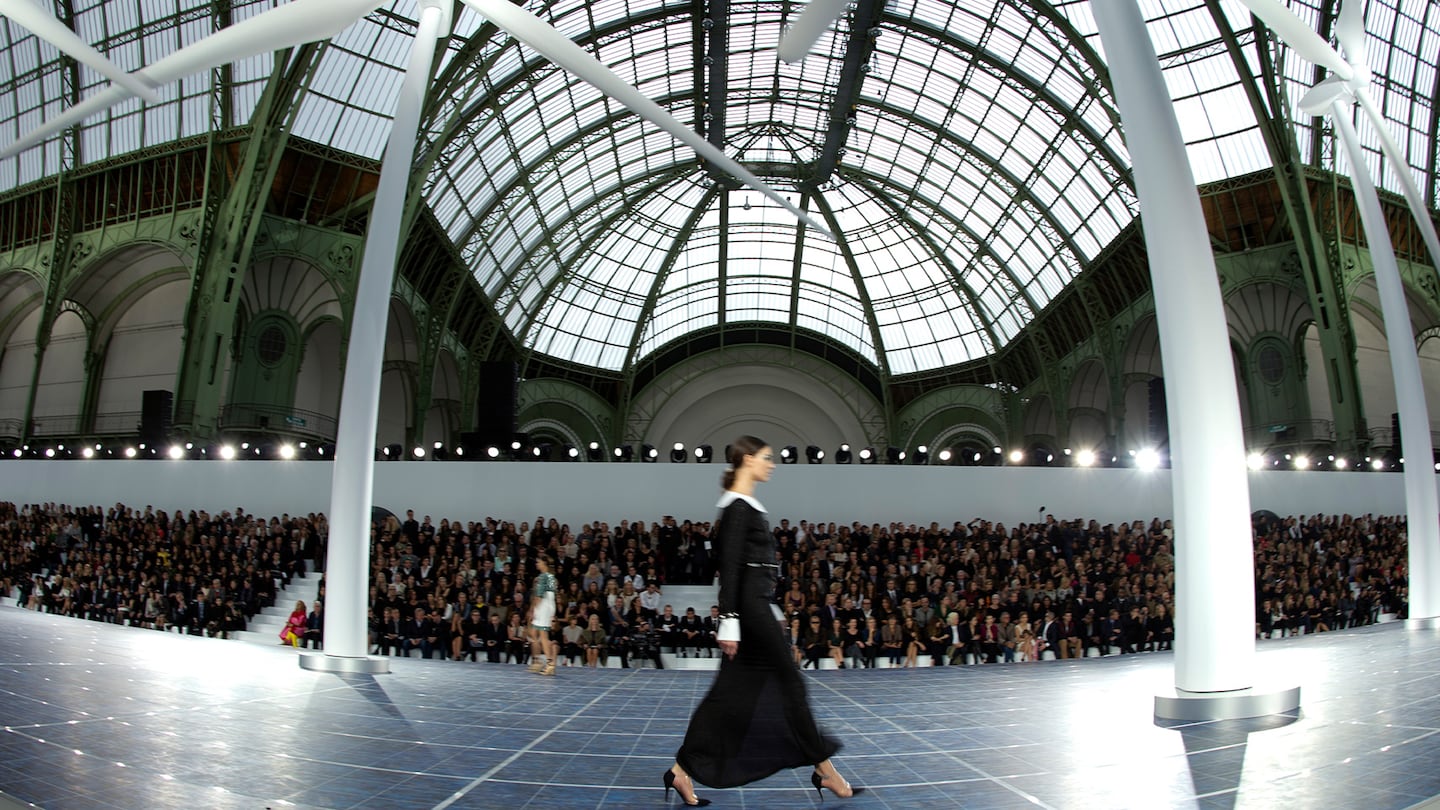
The Business of Fashion
Agenda-setting intelligence, analysis and advice for the global fashion community.

Agenda-setting intelligence, analysis and advice for the global fashion community.

Over the last few years, fashion companies have ranked amongst the business world’s most prolific setters of climate targets. The industry’s greenhouse gas emissions have hardly budged.
The global apparel sector was responsible for an estimated 897 million tonnes of carbon dioxide equivalent in 2021, accounting for nearly 2 percent of the world’s total emissions, according to a new analysis by the industry coalition Apparel Impact Institute (AII).
Though some companies have made strides to invest in renewable energy supply, support efficiency programmes or transition to lower-impact technologies and materials, gains so far have been insufficient to offset the sector’s overall growth. The industry’s emissions increased nearly 1 percent between 2019 and 2021. They’re on track to grow 45 percent to hit 1.3 gigatonnes by 2030, the analysis found.
To stay in line with global ambitions to stave off the worst effects of climate change, the fashion industry needs to rapidly and drastically reverse that trend. The next two years will be a critical test of whether the sector can deliver at scale the changes it’s been promising.
ADVERTISEMENT
“By 2025, we’re going to know very well if what we’re saying right now is what the industry is doing,” said AII chief impact officer Kurt Kipka. “There should be some way to see a course correction.”
In particular, more manufacturers are beginning to engage with and set their own environmental goals, lending momentum to efforts to target the most emissions-intensive parts of the fashion industry. Large parts of the industry have also aligned on broad goals, like phasing out coal and shifting to lower-impact materials, laying the groundwork for swifter, more coordinated and strategic action, trade groups say.
“There are very real examples of companies that are making bold commitments and following through,” said sustainability consultant and author of the AII’s new report Michael Sadowski. “I’m cautiously optimistic … [The industry] needs to get faster and go bigger, but in most areas, there are very concrete examples of impact.”
Meeting climate goals remains a tricky, high-stakes challenge, however.
The world is already “more likely than not” to see temperatures breach 1.5C above pre-industrial levels, the globally agreed limit beyond which it will become difficult to avoid the worst effects of climate change. Fashion businesses are already feeling the impact of extreme weather on raw material supply chains and retail sales.
But change requires coordinated action across opaque and complicated supply chains. It will be expensive, with the heftiest investments required deep in the value chain. And yet even as brands have stepped up their climate commitments, many have continued to squeeze suppliers on prices.
“None of this works without investment, and none of this works unless it’s equitable,” said Sadowski. “You can’t set a target as a brand and say, ‘go do this,’ without supporting vendors.”
The industry will need to engage in policy and regulation, too, to support and incentivise broad structural changes, like wider adoption of renewable energy. And fashion will need to grapple with the “elephant in the room” around growth and consumption, said Sadowski.
For more BoF sustainability coverage, sign up now for our Weekly Sustainability Briefing by Sarah Kent.
Four years after a splashy launch around the G7, the CEO-powered climate drive says it’s gearing up to accelerate action. But it has lost high-profile members and so far delivered little more than a handful of pilot projects.
The industry needs to halve its emissions by the end of the decade to meet global climate goals.
At the UN’s COP27 summit, fashion’s chances of achieving lofty climate targets still rest on ‘a leap of faith,’ with the industry just starting to lay the basic foundations required to deliver.

Sarah Kent is Chief Sustainability Correspondent at The Business of Fashion. She is based in London and drives BoF's coverage of critical environmental and labour issues.
Fashion’s biggest sustainable cotton certifier said it found no evidence of non-compliance at farms covered by its standard, but acknowledged weaknesses in its monitoring approach.
As they move to protect their intellectual property, big brands are coming into conflict with a growing class of up-and-coming designers working with refashioned designer gear.
The industry needs to ditch its reliance on fossil-fuel-based materials like polyester in order to meet climate targets, according to a new report from Textile Exchange.
Cotton linked to environmental and human rights abuses in Brazil is leaking into the supply chains of major fashion brands, a new investigation has found, prompting Zara-owner Inditex to send a scathing rebuke to the industry’s biggest sustainable cotton certifier.